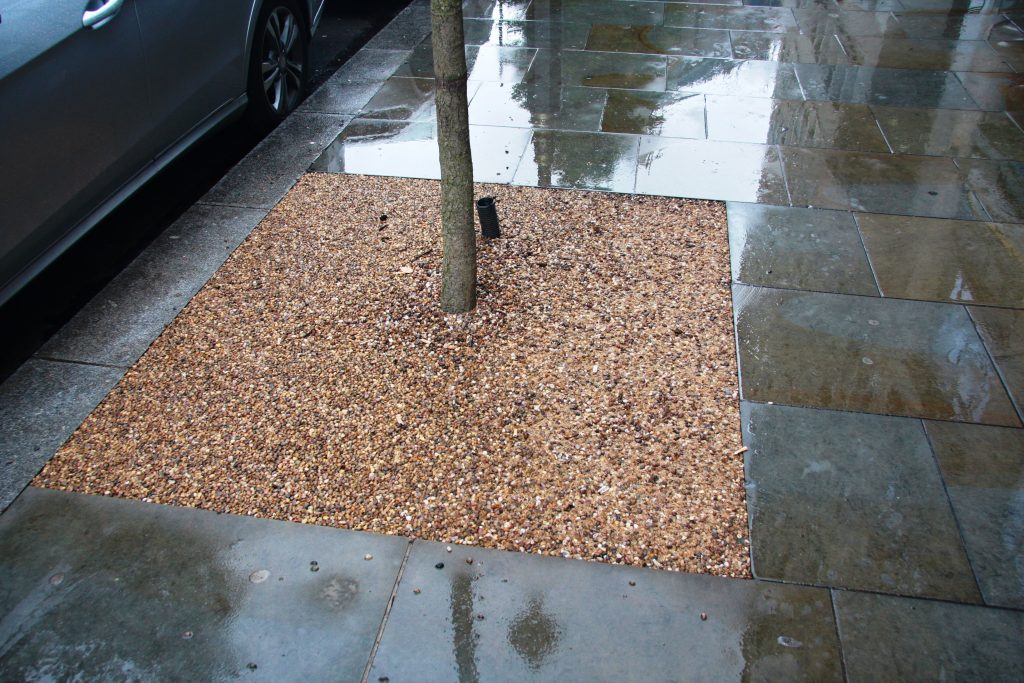This section deals with the streets by type and how they should be unified in style and treatment in the formal set piece townscape of the Dials, captured in Paul Draper’s brilliant recreation of William Hodges’ 1776 painting of the Dials and in historic images.
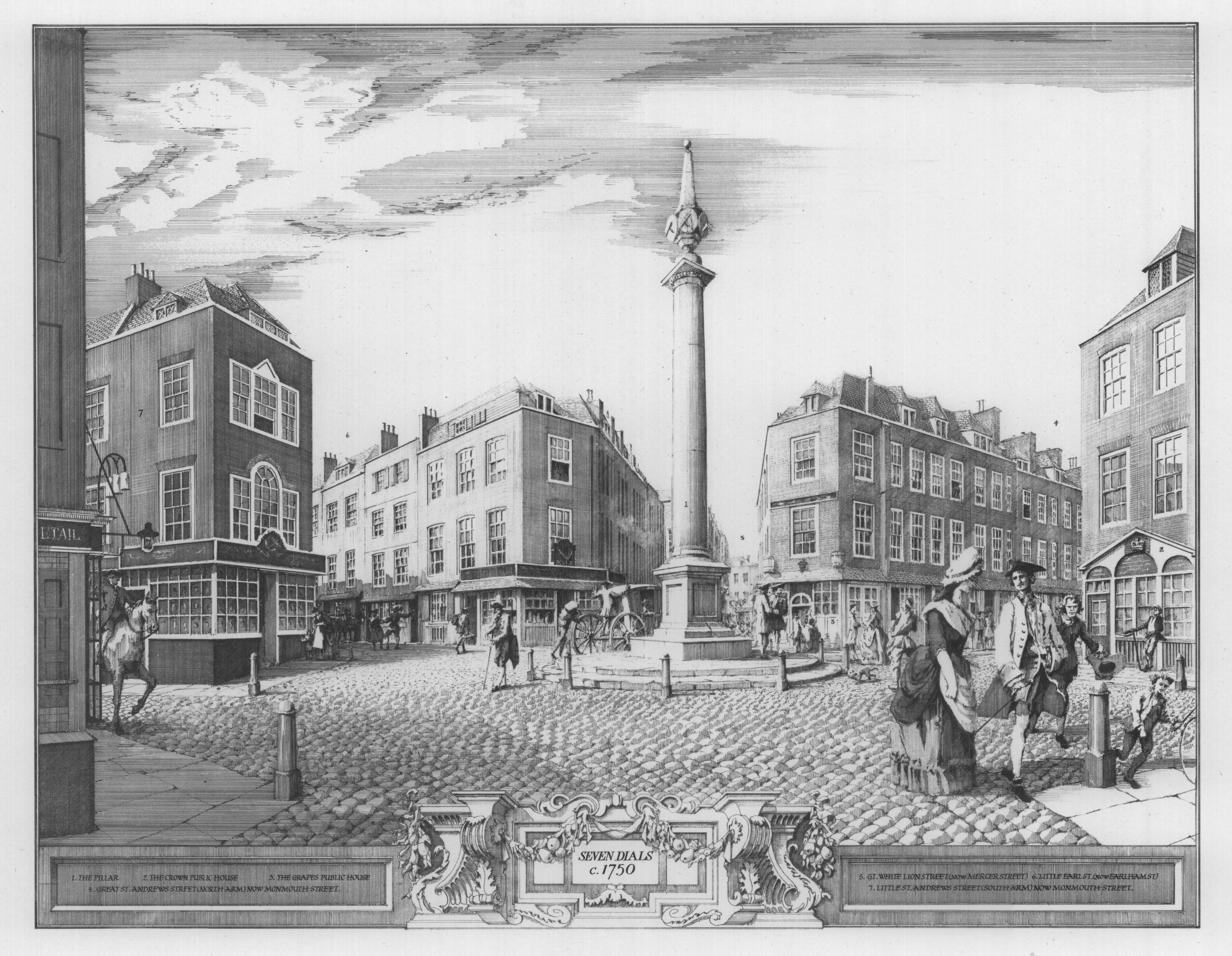
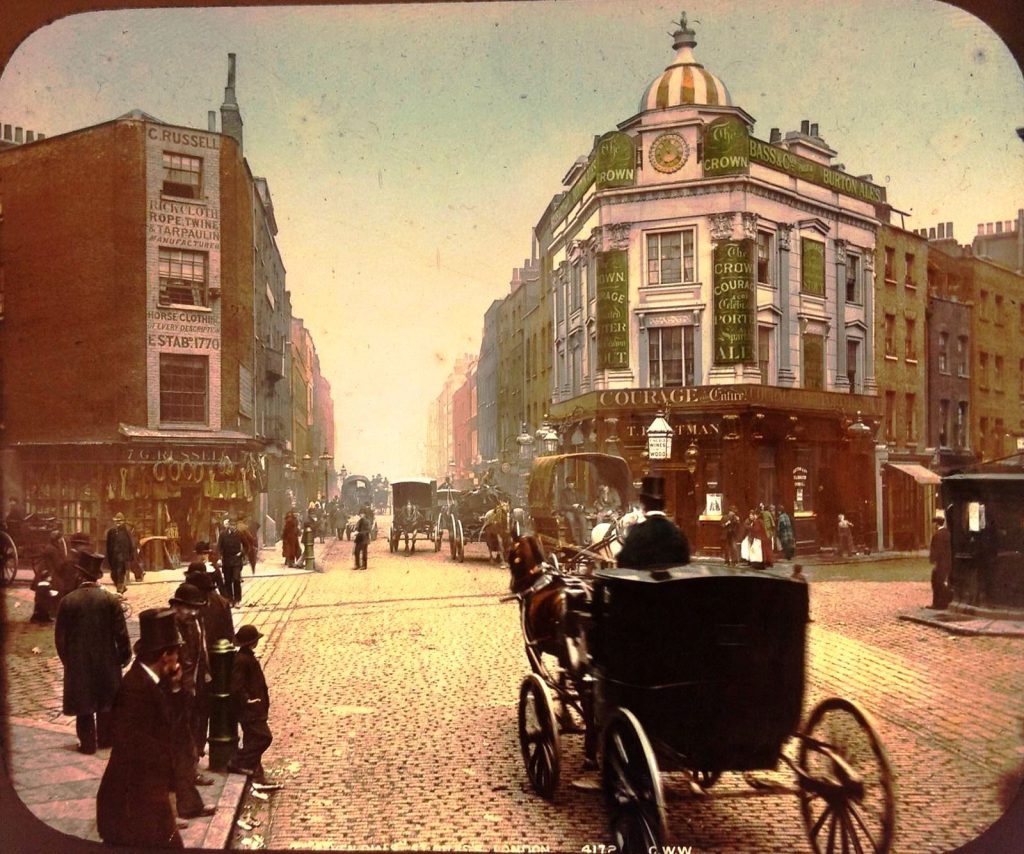
The use of multi-coloured dressed setts in Monmouth Street (2005-6), combined with the continued use of Greenmore ‘York stone’ paving, begun in 1990/01 proved popular with all stakeholders and won accolades. This work was a partnership between the Trust, Camden and Shaftesbury plc. This combination has become the Covent Garden standard, now seen in Earlham Street (West), Shelton Street, Mercer Street (south), Long Acre and King Street. However, Monmouth Street showed signs of failure within a year and similar issues have arisen elsewhere. Research must be carried out to arrive at a sustainable way of supporting dressed setts.
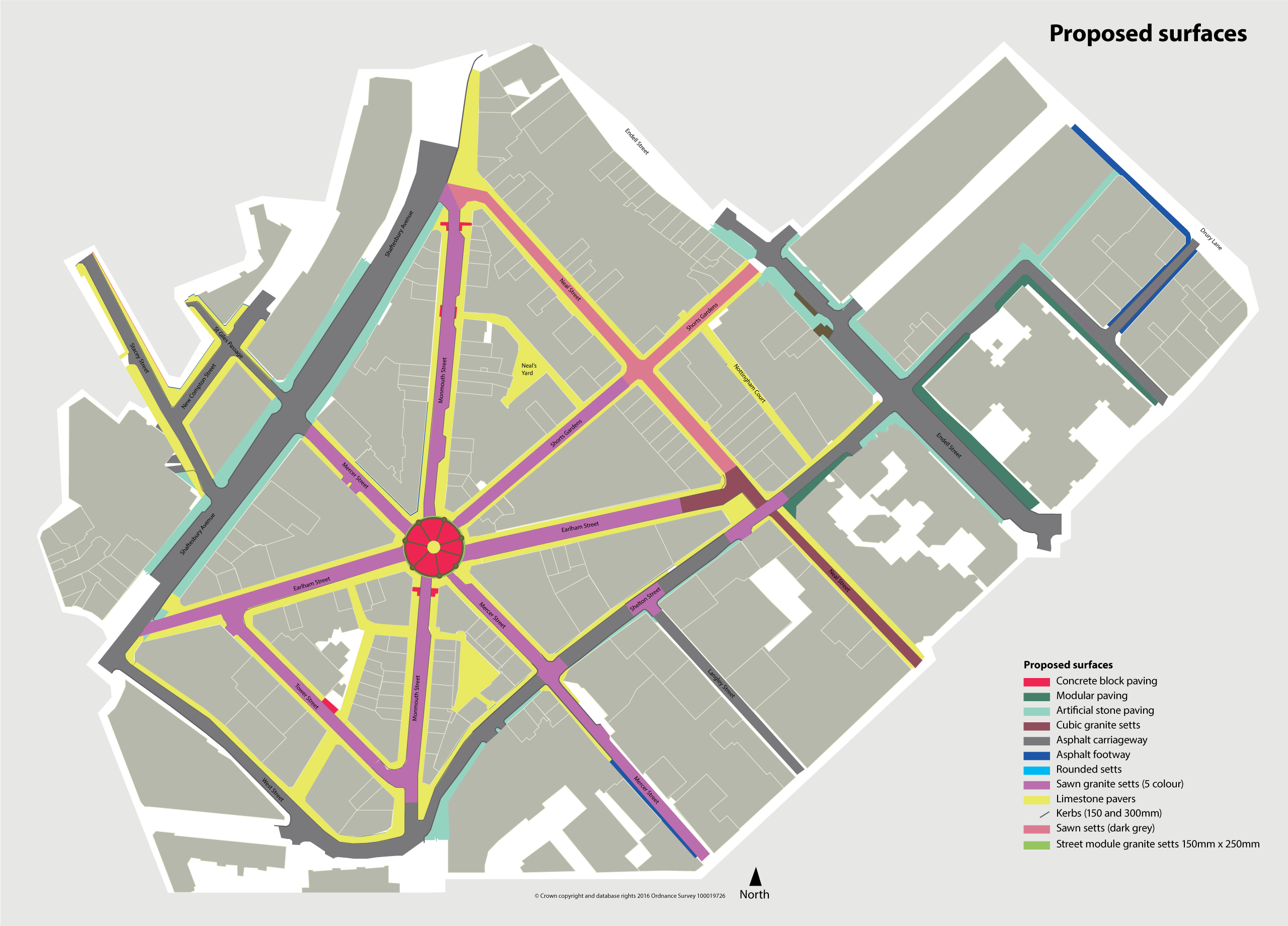
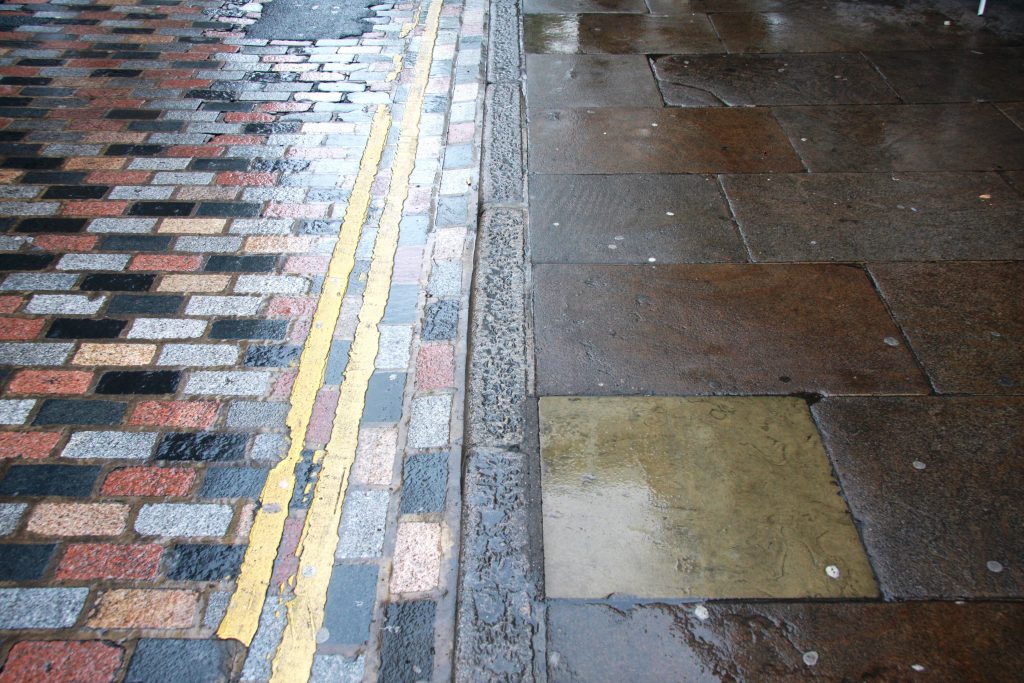
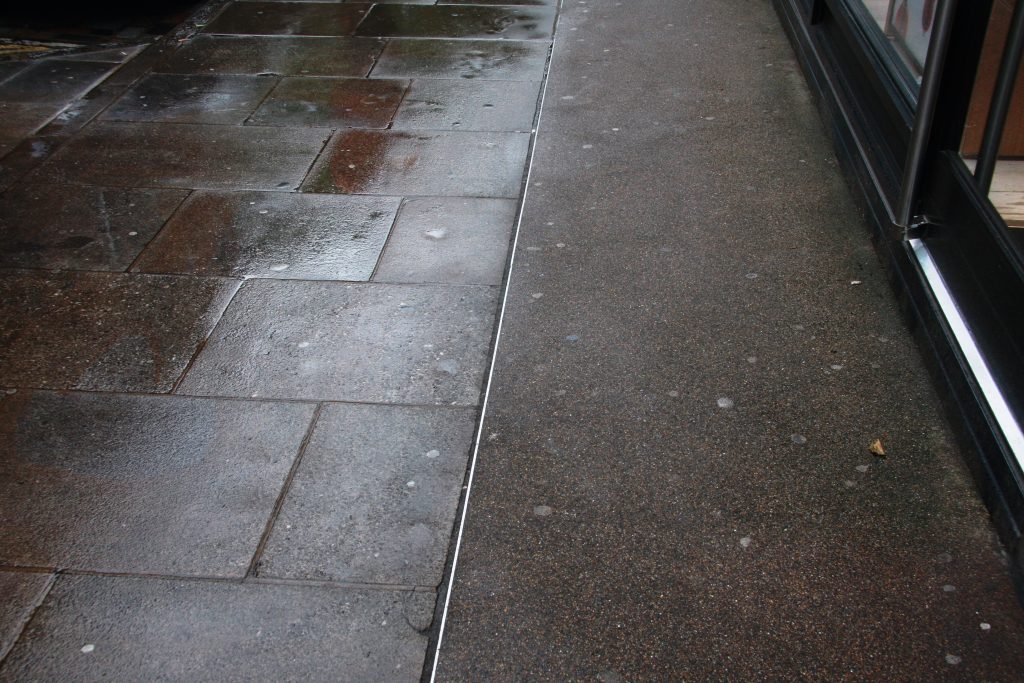
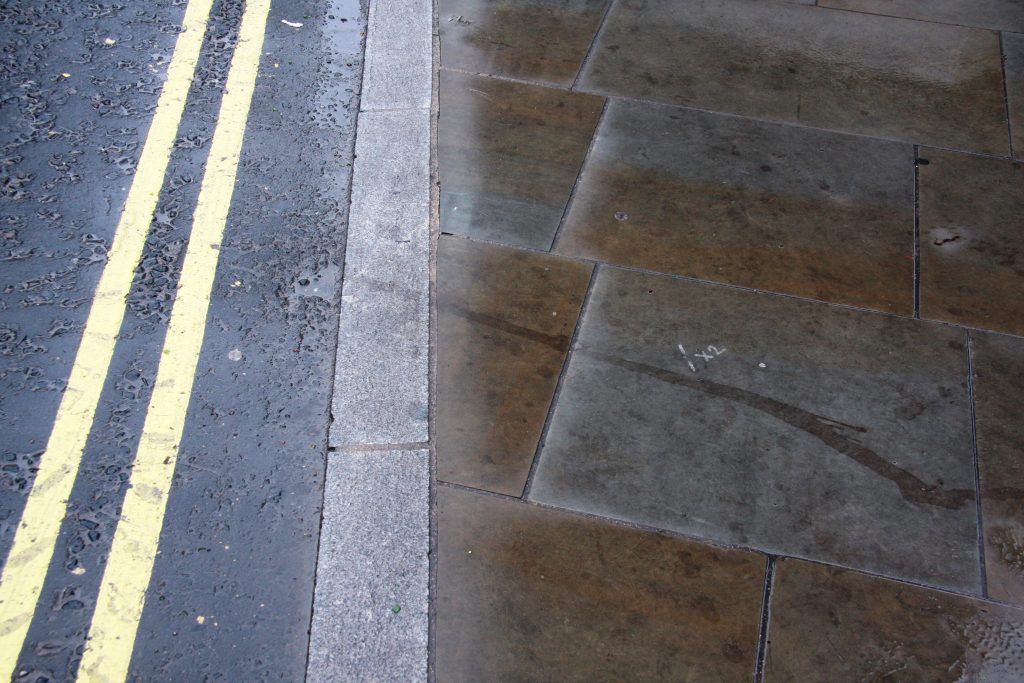
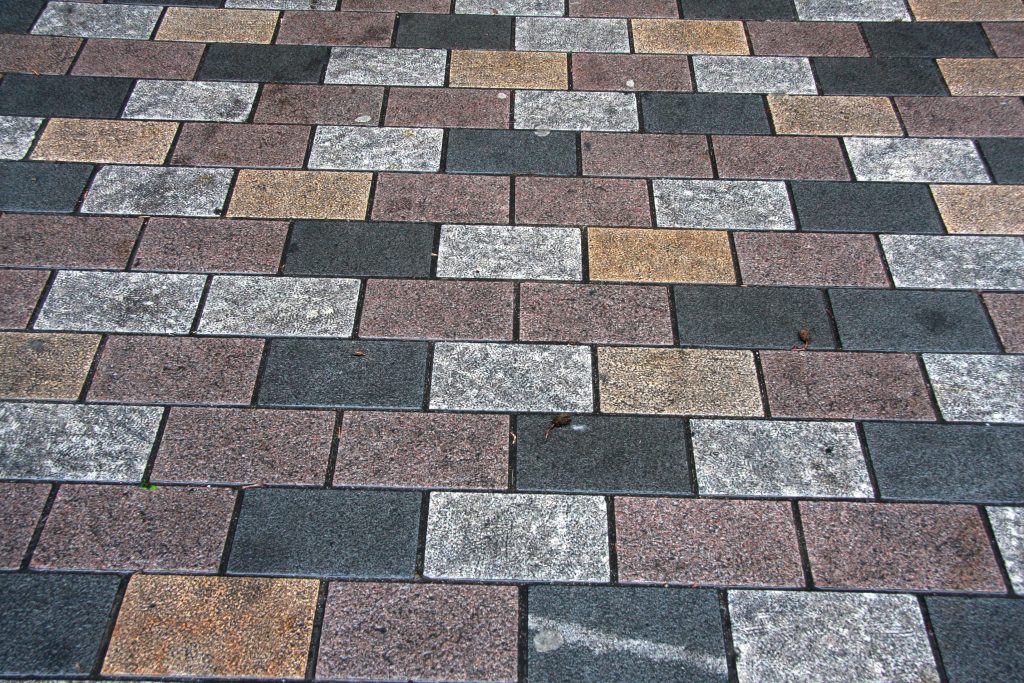
The five-colour mix of granite setts, roughened to give reasonable grip, should be the norm where replacement of inappropriate materials or rounded setts are a barrier to equal access. Tumbled setts might be an alternative. They should be laid with courses set at 150mm spacing across the general direction of travel. Three courses can form the drainage gutter parallel with the kerb where appropriate and take a drainage grating with a 450mm frame.
The Monmouth Street material comprising 600mm wide ‘York stone’ slabs should be the specification of choice for all renewed footways.
Earlham Street East and Short’s Gardens have an unusual coursing pattern of alternate 450 and 600mm courses. There is no need to replace these footways while they are serviceable but, on renewal, this oddity can be replaced with standard coursing to make maintenance simpler and more economical.
A unifying feature of streets in this early part of London’s West End is the 150mm kerb stone. These are generally used in the streets radiating from The Dials. The larger scale streets on the periphery and in the Westminster part of the area tend to have 300mm kerbs. This difference is not an issue as long as the larger kerbs are used consistently in the perimeter streets.
Retaining the ‘memory of the kerb’ is important in preserving the traditional look and feel of the street and the differentiation between footway and carriageway. Whether kerbs have an upstand or not needs to be determined by sensitivities over disabilities, drainage regimes and protecting footways from abuse. Some streets may have sections of the carriageway lifted to footway level to allow wheelchairs etc. to cross without negotiating dished areas of footway as has been done in Monmouth Street and Short’s Gardens. Parts should have kerb faces around 100mm and kerbs should be retained throughout the area.
The disposition of carriageway and footway about the centreline of the street is generally a symmetrical arrangement but, in some cases, one footway may take more foot traffic than the other. Subtle shifting of the carriageway position may be advisable at times to give preference to a more heavily-used footway, such shifting to be for pedestrian movement and not the placing of tables and chairs or planters (see Seating and Eating diagram)
Measures to reduce the clutter of parking signs and markings is an objective of the Trust and is shared by both local authorities in principle. There are various precedents explored in other historic towns (such as Historic Core Zones or Restricted Parking Zones) to create a neater townscape.
Tree grids collect detritus and can create trip hazards. Resin-bonded aggregate is preferred as it allows water through but also allows prams, trolleys and wheelchairs to run over the planted area. Urban trees grow better if there is the possibility of introducing structural soil (a volume of growing medium where the surface load is taken by cages that take the weight, so the soil is not compressed). This needs a gap in underground services and an adequate volume to allow a tree to grow well. This is likely to be rare in Seven Dials.
